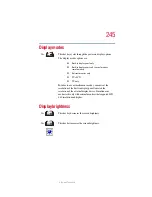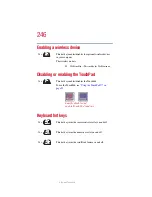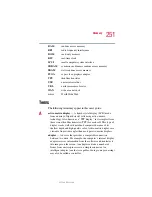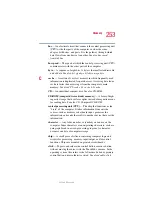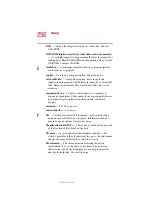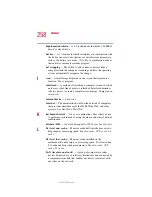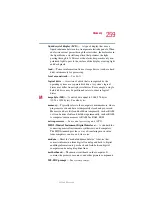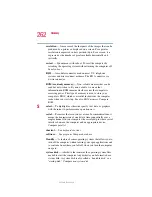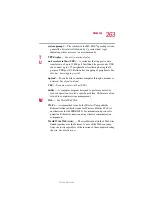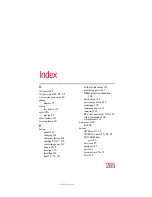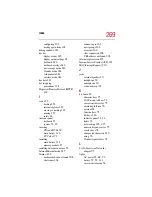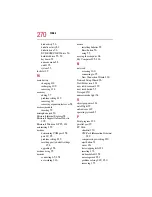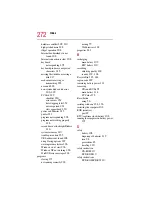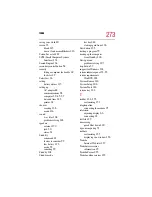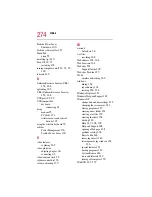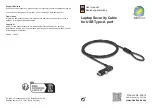
259
Glossary
5.375 x 8.375 ver 2.1.2
liquid crystal display (LCD)
— A type of display that uses a
liquid substance between two transparent electrode panels. When
an electric current passes through the electrodes, the molecules in
the liquid form a crystalline pattern that polarizes the light
passing through it. A filter over the electrodes permits only non-
polarized light to pass to the surface of the display, creating light
and dark pixels.
load
— To move information from a storage device (such as a hard
disk) into memory for processing.
local area network
— See
LAN.
logical drive
— A section of a disk that is recognized by the
operating system as a separate disk drive. A system’s logical
drives may differ from its physical drives. For example, a single
hard disk drive may be partitioned into two or more logical
drives.
M
megabyte (MB)
— A unit of data equal to 1,048,576 bytes
(1024 x 1024 bytes). See also
bytes.
memory
— Typically refers to the computer’s main memory, where
programs are run and data is temporarily stored and processed.
Memory can be volatile and hold data temporarily, such as RAM,
or it can be nonvolatile and hold data permanently, such as ROM.
A computer’s main memory is RAM. See
RAM
,
ROM
.
microprocessor
— See
central processing unit (CPU).
MIDI (Musical Instrument Digital Interface)
— A standard for
connecting musical instruments, synthesizers, and computers.
The MIDI standard provides a way of translating music into a
form computers can use, and vice versa.
modem
— Short for “modulator/demodulator.” A device that
converts information from digital to analog and back to digital,
enabling information to pass back and forth between digital
computers and analog telephone lines.
motherboard
— The main circuit board in the computer. It
contains the processor, memory, and other primary components.
MS-DOS prompt
— See
system prompt.
Содержание 1955-S801
Страница 248: ...248 Power Cable Connectors 5 375 x 8 375 ver 2 1 2 Blank Page ...
Страница 264: ...264 Glossary 5 375 x 8 375 ver 2 1 2 ...

